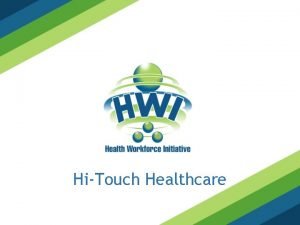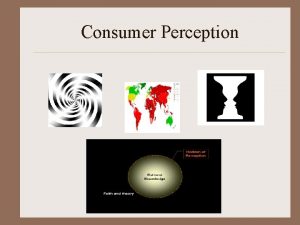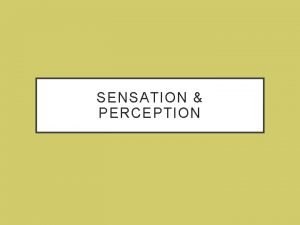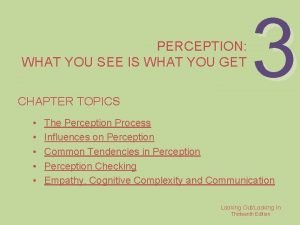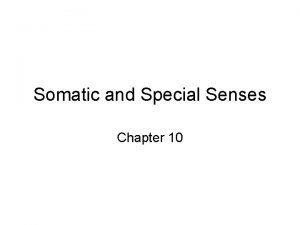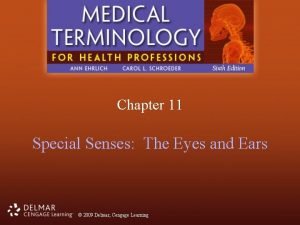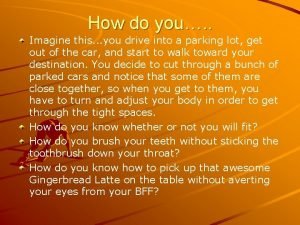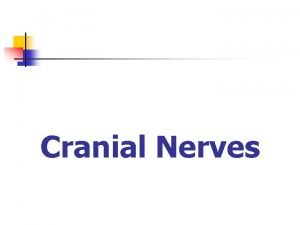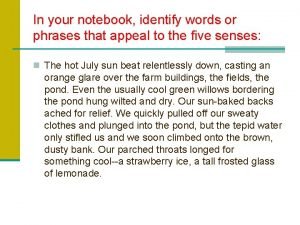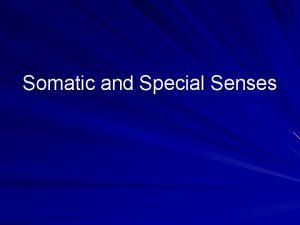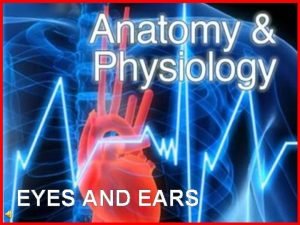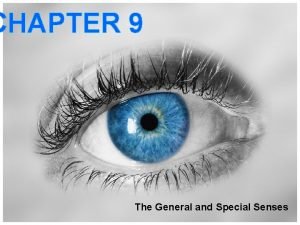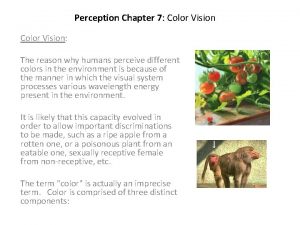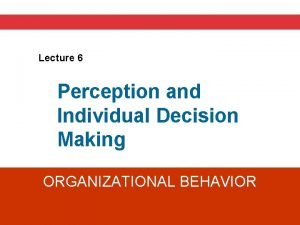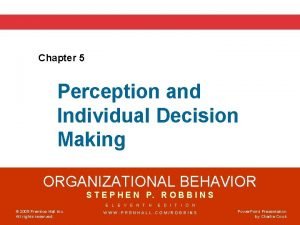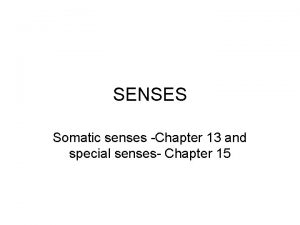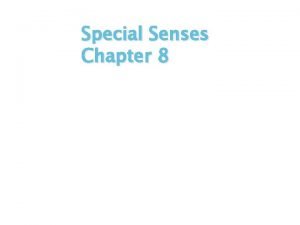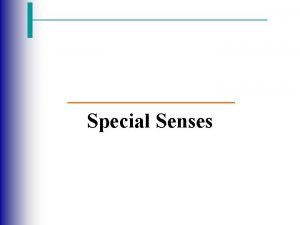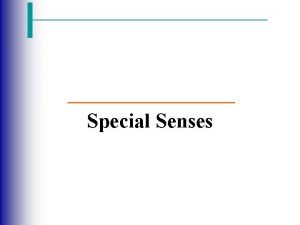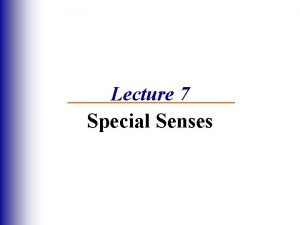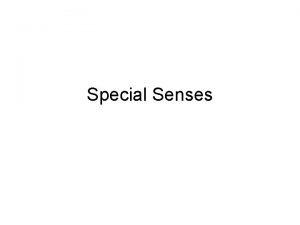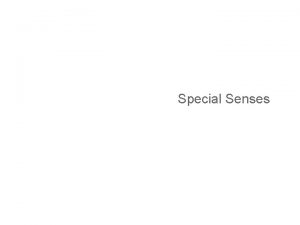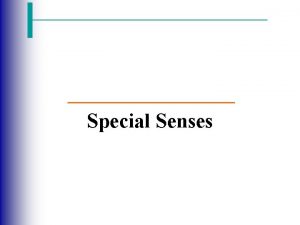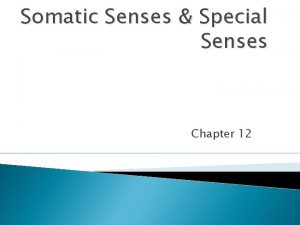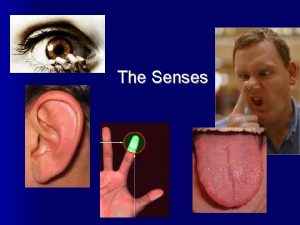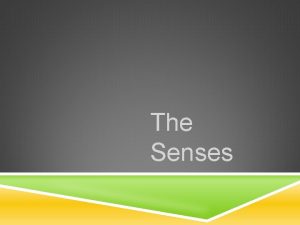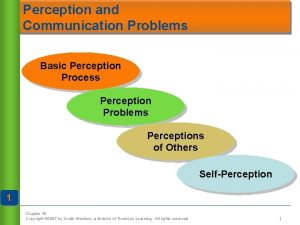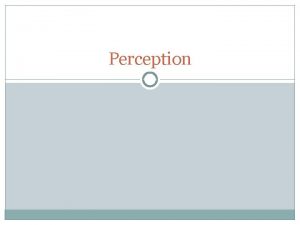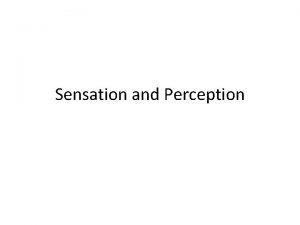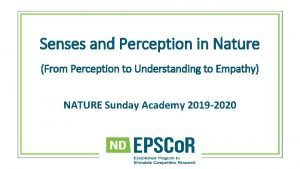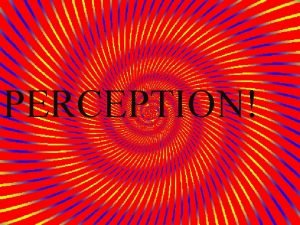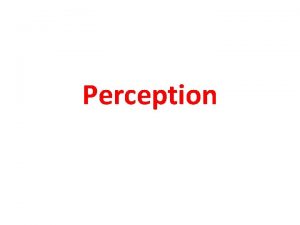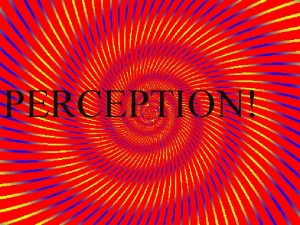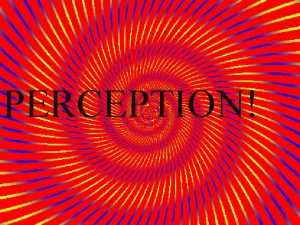Senses and Perception Senses and perception Senses process




























- Slides: 28

Senses and Perception


Senses and perception – Senses – process in which we receive information from the environment (physical) – Perception – Interpretation of environment to give it meaning (psychological)

Information Processing • Top Down - Use of conceptual information and patterns to characterize the whole, the gist. Fastest method. • Bottom Up – Use of data to process all of the information to come to conclusions. Most thorough.

• Green • Blue • Red • Yellow • Red • Green • Blue • Yellow

Senses and Perception – Threshold – the level of sensory stimulation necessary for sensation to occur • Is this constant?

Senses and Perception – Adaption – the gradual loss of attention to unneeded or unwanted sensory information

Vision

Vision • Rods - capable of receiving light energy in low levels – In retina’s periphery – Not involved with color perception

Vision • Cones - involved with color perception – Three colors(red, green, blue) – Blind spot at the optic nerve



Audition • Sound - mechanical energy typically caused by vibrating objects • Cochlea - part of inner ear, contains fluid and receptors (cilia) – Contributes to balance Sense directing of sound by how fast vibrations reach ear

Gustation(taste) • Five tastes – Sweetness – Saltiness – Sourness – Bitterness – Umami Smell, touch, and temperature all affect taste

Olfaction (Smell) • Biggest factor in taste • Can evoke highly emotional memories

Somesthesis – Mechanical Senses (Touch) i. Skin Senses – Senses temperature, pressure, and pain – Pain - several stimulus affect pain – Endorphins block pain

ii. Kinesthesis – communicates information about movement and location of body parts, in joints and ligaments iii. Vestibular senses – gives us sense of balance and knowledge of body position, in inner ear

Perception – Attention – consciousness is focused on particular stimuli • How do you decide what to pay attention to?

Perception – Attention – consciousness is focused on particular stimuli • How do you decide what to pay attention to? – Change – Uniqueness – Relavent to us

– Gestalt – grouping smaller units into larger ones • Information is usually incomplete, the brain completes it • Simplest is easier (chunking)

• Perceptual constancies – The perceived image remains the same despite changes in the retinal image of an object ex. Shape, size, color


Depth perception • Binocular cues – both eyes sees different images and gives us 3 D (binocular disparity)

Depth Perception • Monocular cues – uses one eye – We judged depth using the size, texture, motion, and shadows of objects

Why do optical illusions work?



Why do optical illusions work? • The strategies we use to see the world cause us to misinterpret the sensory input
 What is the difference between somatic and special senses
What is the difference between somatic and special senses General senses vs special senses
General senses vs special senses Perception checking process
Perception checking process Perception checking process
Perception checking process Process of perception
Process of perception Consumer perception process
Consumer perception process Perception checking process
Perception checking process Process of perception ppt
Process of perception ppt Pillow method communication
Pillow method communication The perception process
The perception process 5 elements and 5 senses
5 elements and 5 senses Thermoreceptors
Thermoreceptors Chapter 11 special senses the eyes and ears
Chapter 11 special senses the eyes and ears Anatomy and physiology chapter 8 special senses
Anatomy and physiology chapter 8 special senses The chemical senses taste and smell review worksheet
The chemical senses taste and smell review worksheet Kinesthetic sense driving
Kinesthetic sense driving Cranial nerves for special senses
Cranial nerves for special senses In your notebook identify the function
In your notebook identify the function General and special senses
General and special senses Somatic and special senses
Somatic and special senses Special senses the eyes and ears
Special senses the eyes and ears The general and special senses chapter 9
The general and special senses chapter 9 Chapter 5 sensation and perception
Chapter 5 sensation and perception Chapter 7 vision and perception
Chapter 7 vision and perception Test papi kostick
Test papi kostick Perception and individual decision making
Perception and individual decision making Gestalt laws
Gestalt laws Eudemonistic model example
Eudemonistic model example Perception and individual decision making
Perception and individual decision making



